|
|
|
Alice Paul was raised in a well-to-do Quaker family in New Jersey. Her father was a banker and her parents believed highly in the value of education. Paul graduated with a degree in biology from Swarthmore College (1905), an institution that her grandfather helped to found, earned graduate degrees in sociology at the University of While studying and doing social work in England, Paul learned firsthand the confrontational tactics and civil disobedience used by the militant wing of the British suffrage movement. She participated in demonstrations and was jailed for her suffrage activity in London. Upon her return to the United States in 1910, Paul pressed the National American Woman Suffrage Association (NAWSA) to adopt approaches like those used in Britain and advocated activism focused on passing a federal amendment to the U.S. Constitution guaranteeing women the right to vote. Beginning with her appointment as chairman of NAWSA's Congressional Committee in 1912, Paul and a small group of key supporters began a long campaign in Washington, D.C., to secure a national woman suffrage amendment. Central in her early organizing efforts was the famous counter-inaugural suffrage parade mounted on March 3, 1913, in which masses of suffragists from many states filled the streets around the U.S. Capitol, White House, and Treasury Building. Paul's belief in the need to attract publicity and keep suffrage visible in the public eye, as well as her determination not to shy away from confrontation and her dogged focus on a federal amendment, led to an irreconcilable break with NAWSA in February 1914. From that time on, Paul worked for suffrage through her own organization, the Congressional Union for Woman Suffrage (CU), which she and Lucy Burns founded in April 1913 while still serving on NAWSA's Congressional Committee. The CU became the National Woman's Party, with which Paul was affiliated until her death. Like her Quaker hero Susan B. Anthony, Paul single-mindedly pursued a woman suffrage amendment. In the same way that Anthony inspired her, Paul became a role model for other activists who were emboldened by her defiance of authority. In October 1917 she was sentenced to seven months in prison for her role in picketing the Wilson White House. Her subsequent hunger strike led prison officials to retaliate with psychiatric evaluation and force-feeding. Paul was an ingenious strategist and inspiring leader who gave a public face to the NWP. After 1920 she turned her efforts to the Equal Rights Amendment, which she first proposed at a NWP convention in 1923. She lived to see the ERA passed by Congress in 1972. Paul's most important contribution after winning suffrage was building effective international networks among women. She founded the World Woman's Party in 1938. After World War II, Paul worked to ensure that equal rights for men and women were part of the United Nations platform. She also sought to include sex discrimination as a category in Title VII of the Civil Rights Act of 1964. Paul died at the age of 92 at a nursing care facility in Moorestown, New Jersey, endowed by her family. |
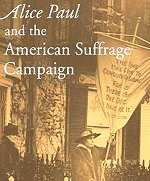 Alice Paul and the American Suffrage Campaign An analysis of Paul's nonviolent and visual rhetorical strategies, Alice Paul and the American Suffrage Campaign narrates the remarkable story of the first person to picket the White House, the first to attempt a national political boycott, the first to burn the president in effigy, and the first to lead a successful campaign of nonviolence |
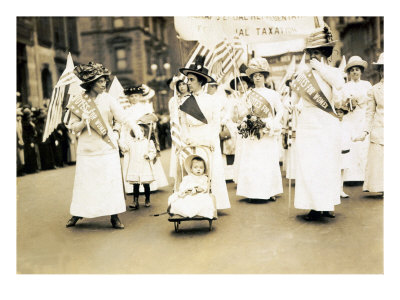 Women's Suffrage Parade New York City, May 6, 1912 12 in. x 9 in. Buy at AllPosters.com Framed Mounted |
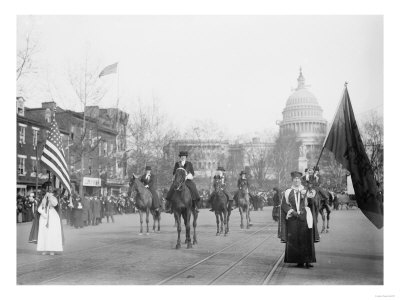 The Head of the Women's Suffrage Parade Photograph - Washington, DC 24 in. x 18 in. Buy at AllPosters.com Framed Mounted |
|
Alice Paul, ca. 1910-16.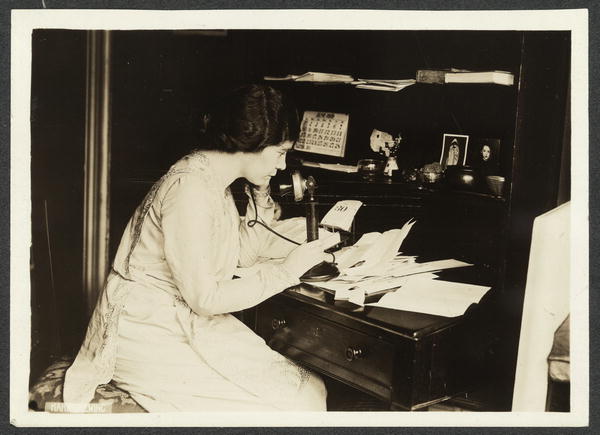 |
||
 Alice Paul, 1915 9 in. x 12 in. Buy at AllPosters.com Framed Mounted |
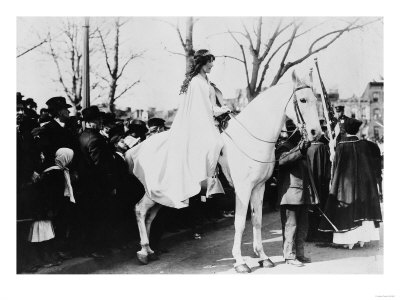 Woman on Horse Woman's Suffrage Parade Photograph - Washington, DC 24 in. x 18 in. Buy at AllPosters.com Framed Mounted |
|
The day after the police announced that future pickets would be given limit of 6 mos. in prison
Photograph of Alice Paul emerging from National Woman's Party headquarters holding banner, followed by Dora Lewis.
Unidentified women stand with a banner in doorway of building. Banner Paul carries reads:
"The Time Has Come to Conquer or Submit, For Us There Is But One Choice. I Have Made It. President Wilson."
Paul is leading picket line from headquarters to the White House.

When Tennessee the 36th state ratified, Aug 18, 1920, Alice Paul, National Chairman of the Woman's Party,
unfurled the ratification banner from Suffrage headquarters.

Women of the American Suffrage Movement
Womens Suffrage Timeline
American Civil War Women
Womens Civil War Reading Titles
American Civil War Recipes
Civil War Exhibits
 Jailed for Freedom by: Doris Stevens Dramatic documentation of women's struggle to win the vote is brought to light by a firsthand witness who reveals, among other facts, the imprisonment, vilification and brutality women experienced during their fight |
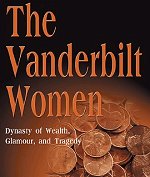 The Vanderbilt Women: Dynasty of Wealth, Glamour and Tragedy The fascinating lives of three generations of Vanderbilt women who dominated New York society from the middle of the eighteenth century through the twentieth. Of special interest are the discovery of unpublished letters |
 Century of Struggle The Womans Rights Movement Young suffragists who helped forge the last links in that chain were not born when it began. Old suffragists who forged the first links were dead when it ended. It is doubtful if any man, even among suffrage men, ever realized what the suffrage struggle came to mean to women |
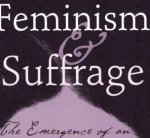 Feminism and Suffrage: The Emergence of an Independent Women's Movement in America, 1848-1869 In the two decades since Feminism and Suffrage was first published, the increased presence of women in politics and the gender gap in voting patterns have focused renewed attention on an issue generally perceived as nineteenth-century |
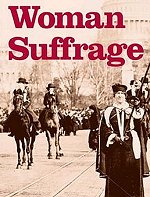 The Concise History of Woman Suffrage: Selections from History of Woman Suffrage, by Elizabeth Cady Stanton, Susan B. Anthony, Matilda Joslyn Gage, and the National American Woman Suffrage Association |
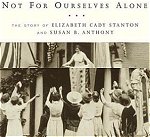 Not For Ourselves Alone: The Story of Elizabeth Cady Stanton and Susan B. Anthony Two heroic women who vastly bettered the lives of a majority of American citizens. For more than fifty years they led the public battle to secure for women the most basic civil rights and helped establish a movement that would revolutionize American society |
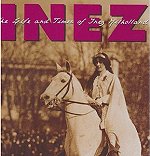 Inez The Life and Times of Inez Milholland |
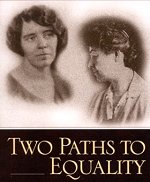 Two Paths to Equality: Alice Paul and Ethel M. Smith in the Era Debate, 1921-1929 Amy E. Butler expertly deals with the ERA, Equal Rights Amendment, and two of the more important figures in the early ERA debate. |
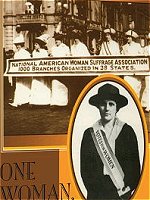 One Woman One Vote This program documents the struggle which culminated in the passing of the 19th Amendment in the U.S. Senate by one vote. Witness the 70-year struggle for women's suffrage. Discover why the crusaders faced entrenched opposition from men and women who feared the women's vote would ignite a social revolution. DVD |
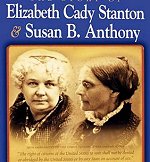 Not for Ourselves Alone: The Story of Elizabeth Cady Stanton & Susan B. Anthony Together they fought for women everywhere, and their strong willpower and sheer determination still ripples through contemporary society. Here lies the story of two of our century's most celebrated pioneers Elizabeth Cady Stanton and Susan B. Anthony. DVD |
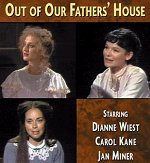 Out of Our Fathers House Broadway Theatre Archive This play presents the true stories of women who sought independence at any cost. The compelling text is taken entirely from the diaries, journals and letters of the characters portrayed. |
Sources:
U.S. Library of Congress
Federal Citizen